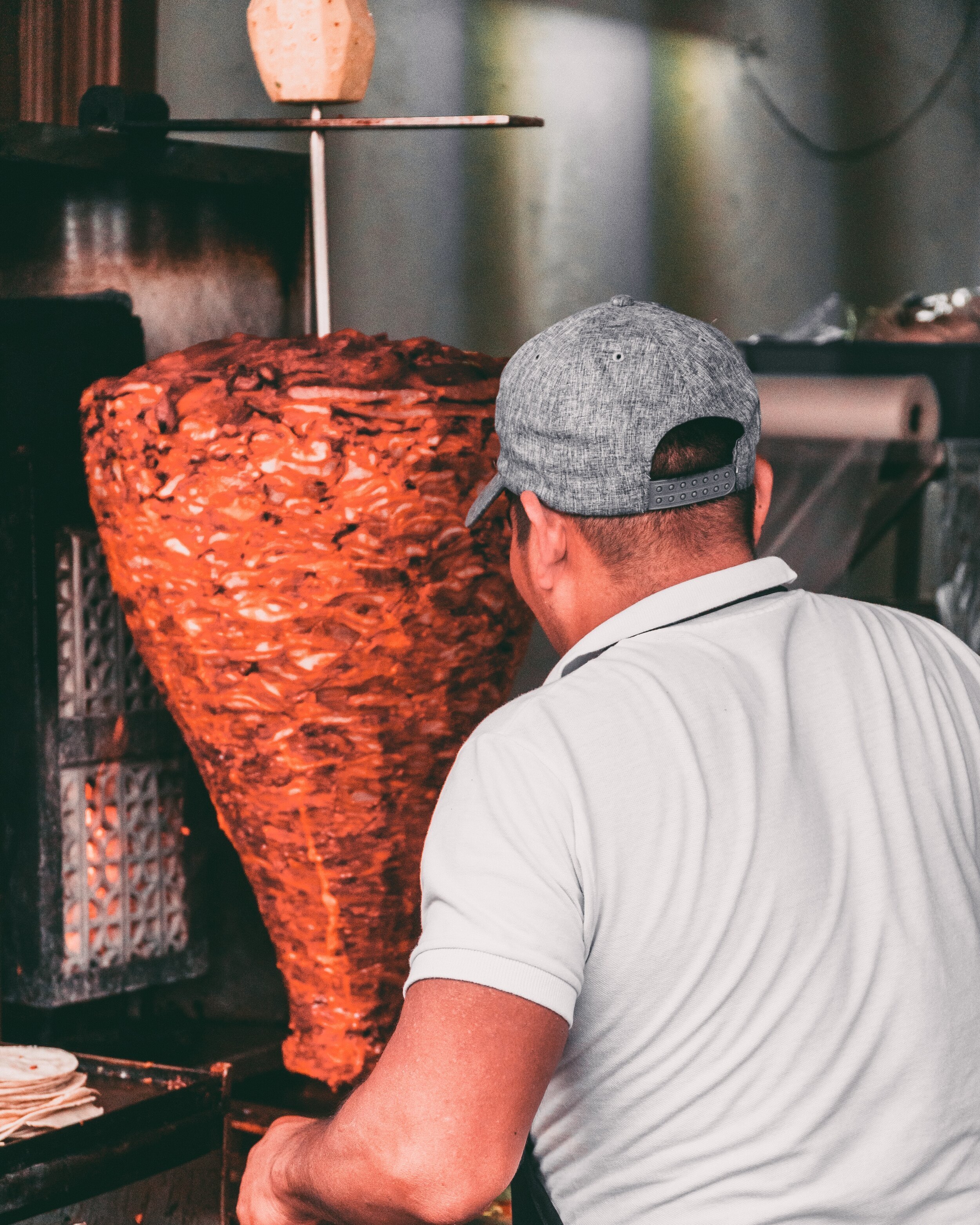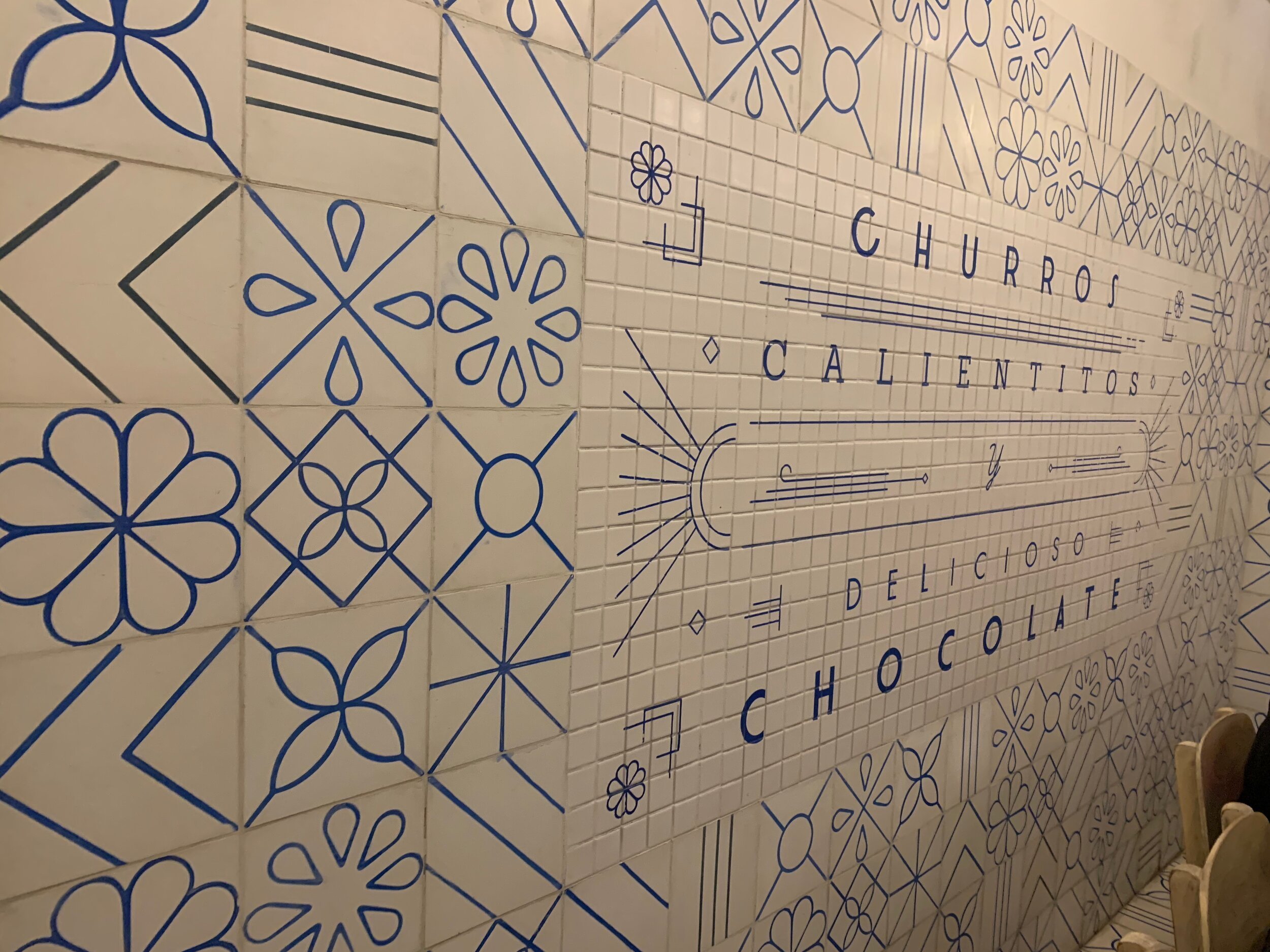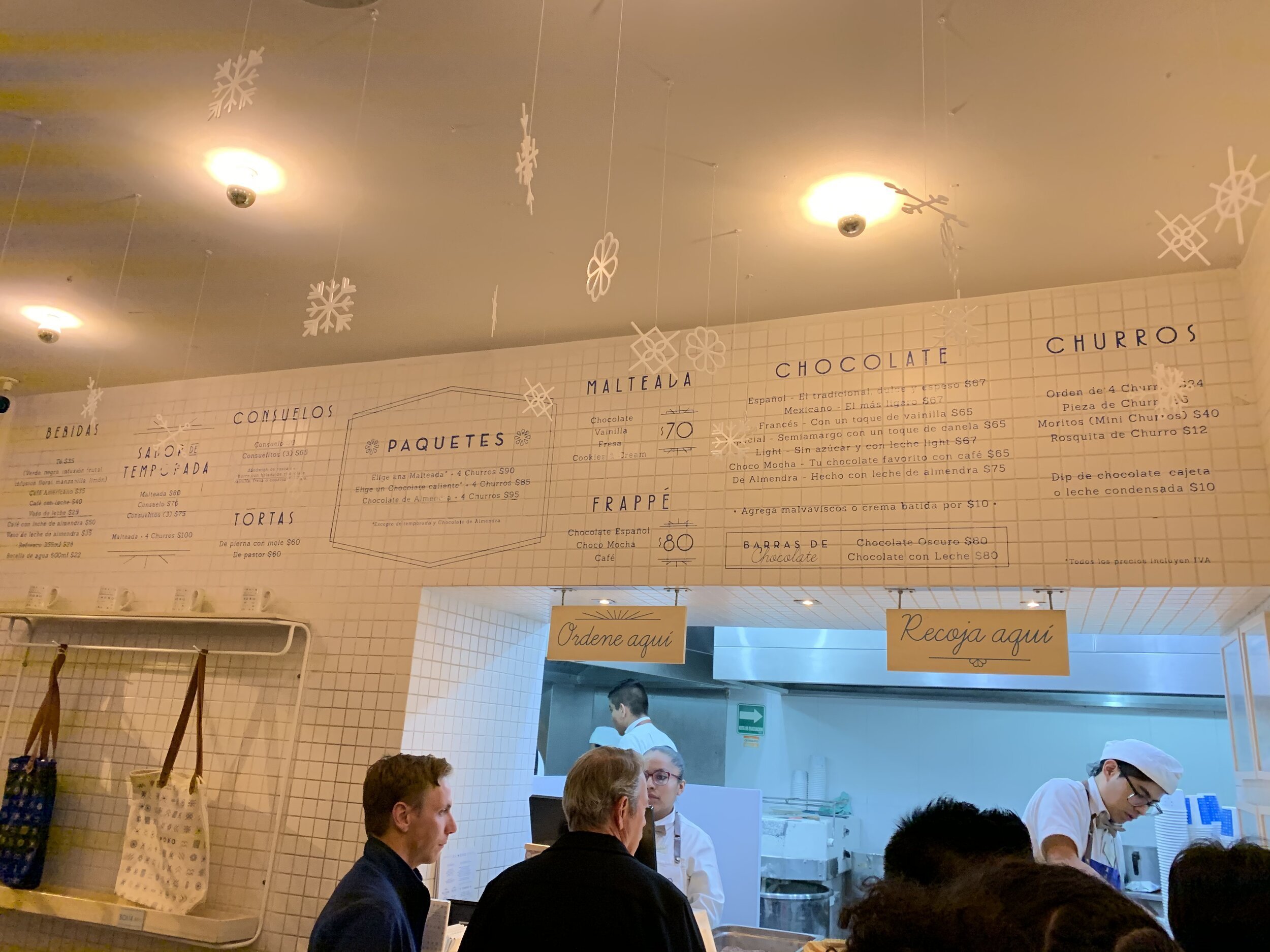Traveling with Food Allergies - Spotlight on Mexico
Travel is my family’s passion. But when our youngest had an anaphylactic episode in Istanbul, Turkey, at only 18 months old, we almost lost our gumption to continue our family pastime. This cherished family ritual was threatened. As a therapist, I often encourage clients to push back at fear, especially when it’s irrational. But as a parent of a child with food allergies, I know that some fear, such as the fear of anaphylaxis, can be entirely logical and at times protective. Eager to get back on that proverbial travel horse and not succumb to the unhealthy limitations worry imposes, it was time for a reasonable dose of my own medicine. I read voraciously about traveling with food allergies and over time was able to resume my most treasured family tradition.
Zoe Smith writes for CNN, “For many travelers who suffer allergic reactions, the best travel destination is simply the safest destination -- a country where allergens are sparse, food hygiene is excellent, public allergy awareness is high and restaurant staff are happy to cater to special needs.”
This approach directed all our early efforts. We started out with those destinations frequently traveled and vetted by food allergy trekking pioneers. Choosing, for instance, Orlando, Florida, replete with park blogs and widely used and reviewed food allergy policies was an obvious choice. International travel then extended to countries where English was well spoken or where food allergy protocol and practices were well established (England and the Netherlands come to mind.) Next we expanded our comfort zone to include destinations whose cuisine posed less risk to our unique allergens. But what if your travel bug nudges you towards countries that don’t check all those ideal boxes. Do you limit your horizons? Not me!
To push back fear and live empowered with food allergies requires motivation, creativity, and effort to constantly expand horizons and experiences.
PHOTO: pina messina @pinamessina
To push back fear and live empowered with food allergies requires motivation, creativity and a constant effort to expand horizons and experiences. It’s always a work in progress….. This year, we ventured Mexico, a destination that holds a cherished place in my heart, rich with memories of a life altering teen exchange program in the heart of Veracruz, in a tiny village at the foot of a mountain, where I was the only tall, blonde English speaker for miles and perhaps years. But how would Mexico, as a destination, do on my family’s food allergy travel planning checklist?
Nuts are featured in some cuisine favorites (think, Mole), but there are a variety of other foods that are most often entirely nut free (think, tacos, chilaquiles, tostadas, elote, enchiladas and tamales.) We had high end translation skills amongst us (two of us are fluent and we had great digital translation tools) and we are always armed with 6 epinephrine auto-injectors. Perhaps due to the fact that the prevalence of food allergies is lower than in the U.S, allergy education, awareness, food preparation and related policy leave ample room for improvement. On the upside, packaged goods are labeled to indicate their food allergen content, but we also knew that restaurants would not offer allergen information and that servers and kitchen staff may lack appropriate training. Mexico thus fell into the category of a low to medium risk for allergen exposure and our sense of communication (fluency) and agency (I knew this culture would welcome my inquiries and requests for accommodation), but a high risk for safety awareness, protocols and practices. It was a perfect destination for pushing back fear and further expanding our horizons! We chose to visit a beachfront resort, two major cities, two traditional colonial towns, and a few tiny villages in the mountains.
Here is what we learned: 4 simple and practical strategies to have AMAZING TRAVELS, DESPITE FOOD ALLERGY FEARS AND FRUSTRATIONS!
First, keep it fun and playful!
Ordering food in any restaurant is stressful for those of us with food allergies, but even more so abroad and in another language. When the wait service or kitchen staff don’t get it, leave! It’s quite simple. We had to leave three restaurants before ordering in three weeks. Not bad with over 30 restaurant outings.
But when you decide to stay and invest in a restaurant, HAVE FUN! My gang loves to play cards, so we traveled with a deck everywhere we went. Nothing like sipping Michelados , a vino tinto, or Jarritos (mandarina was our favorite) while playing Spades! In fact, integrating fun into your plans, takes the focus off of the food per se - relaxing emotional real estate. In Mexico City (CDMX), cafes line streets until the late night hours, with inviting teas, coffees and desserts. We found one that also offered board games. El Ocho-Cafe Recreativo, had a large assortment of games such as Pictionary, Uno, Rummikub, Monopoli, Taboo, etc.., served along with sodas, smoothies, wine, beer, mixed drinks and other spirits. We played Pictionary, as not all of us spoke Spanish.
Second, maximize and personalize experiences, with advance planning, guides and BYOF (Bring Your Own Food!)
Marv Watson @mrvphotography
Purchasing advance tickets and guides is smart, reasonably priced and a wonderful way to enhance your every experience.
Not everyone in my clan loves museums, but we make sure we do a few in each city, especially in Mexico, a country rich in history, music and the arts. Maximize and personalize your experience with advance planning to reduce wait times on otherwise potentially long lines, and when your budget permits, invest in guided tours, which allows you to tailor your tour to your family’s ages, interests, background knowledge, etc.. Compared to prices back home, guided visits at locations such as La Casa Azul, Frida Kahlo’s home, La Zona Arqueológica de Teotihuácan, and the Museo Nacional de Antropología are accessible to most international travelers’ budgets!
Advance Plan for Snacks
While I recommend packing dry snacks from home (safe granola, fruit bars, dried fruit, etc…) it is also possible to manage with local products and smart to know where you can buy what YOU need.
We always traveled with fresh fruit, purchased at a supermarket or a local jugueria. But when we wanted something more, we stopped at one of the many juice bars, found almost anywhere in urban Mexico. They are healthy and inexpensive, but not without risk. They also sell and blend a variety of other products that contain gluten, nuts, and seeds. The risk for cross contact was high. For our child with food allergies, we avoided anything blended. Instead, we ordered fresh squeezed citrus. Each juguería had a machine, typically a hand press, dedicated only to orange and grapefruits. We asked them to clean down the area on which they cut the fruit and this made for an easy, safe, healthy and delicious purchase.
Eat in advance or bring your own food if you’re concerned you won’t be able to find safe options.
When visiting friends or family, we typically fed our youngest in advance. Mexicans are incredibly generous and warm hosts. We wanted to keep our child safe, yet not offend those who likely spent hours preparing for our meals. When doing excursions away from town centers, bring your own food. Smaller bodegas or kiosk won’t offer the variety you need for allergen-free foods, or the option of reading labels.
We were lucky enough to spend the Christmas holiday with old dear family friends in a tiny village, called, Xico, outside of Xalapa, the capital of the state of Veracruz. This sleepy village, where I had participated in a homestay program in the early 1980’s, was so quiet, that it still used switch board operators for the local lucky 50 families that had a telephone. Now, it has been designated one of Mexico’s “Pueblos Mágicos,” by the Ministry of Tourism. Perhaps in an effort to bring domestic and international tourism to destinations beyond it’s beautiful and already celebrated beaches, the government identified villages across the country whose culture, beauty, traditions, folklore, history, and hospitality reflect the diversity of their national identity. Even if this weren’t a journey back towards cherished memories for us, this destination was by far our top pick for Mexico this year!
Piñatas y Posadas
On Christmas Eve, we were invited to share in Las Posadas, piñatas, and a Christmas feast, where we knew there would be over 20+ guests. PHOTO: @filiosphotography
On Christmas Eve, we were invited to share in Las Posadas, piñatas, and a Christmas feast, where we knew there would be over 20+ guests. Las Pasadas are a cherished Mexican tradition, where families sing and re-enact, amidst candlelight, Mary and Joseph’s journey to Bethlehem and their search for a place to stay. The evening is rich in song, where they sing lullabies to a doll-like figurine of the newborn baby Jesus, break piñatas, and of course serve a large feast! Mexican generosity and hospitality is limitless, and this holiday meal is work intensive. We also knew it would be potluck, so we couldn’t control the menu. We were careful to graciously accept the invitation, inform them of our child’s allergy to nuts and sesame, but to also prepare independently for her meal. Earlier that day, we went to a take out rotisserie chicken restaurant, purchased a meal for our little one, and kept it in the fridge. 20 minutes before departure we served it to her, so she went full. Mexicans eat their dinner late, rarely before 9 pm and this special gathering started at 10 pm, so eating early worked well for our tween. Turns out our host had cooked most of the dishes, knew the ingredients well and our youngest was able to enjoy at least three of the beautiful plates served that night!
When on an excursion, BYOF.
When traveling to places with limited food service such as boat trips, buy your snacks and drinks in advance and bring them along. PHOTO: @julietajulieta
When traveling to places with limited food service such as boat trips, buy your snacks and drinks in advance and bring them along. Our trip to visit the famous canals of Xochilmico, a somewhat gritty district located 28 km south of Mexico City, serves as a great example. At Xochimilco you can explore the last vestiges of a water transport and agricultural system developed by the Aztecs over 600 years ago to live and prosper in an otherwise uninhabitable region of shallow lakes. They built chinampas, or floating, artificial islands, creating some of the most productive and sustainable agricultural systems in the world. This area is now threatened by ground water extraction, development and contamination of the canals. Listing it as a UNESCO World heritage site, will hopefully bring attention to the need to preserve this historical wonder. We felt both compelled to visit this site (for fear that it may no longer exist in 20 years) and to also not contribute to the invasion of tourism, which undoubtedly impacts its ecological decline.
Some folks hire trajineras for many hours to take them far out of the tourist zone to see the legendary isla de las munecas, plant nurseries, and more residential areas. We opted for straight up tourist kitsch, wanting to limit our visit to two hours. The canal is like an explosion of color, a permanent traffic jam of beautifully decorated trajineras, piñatas, music and a variety of aromas, creating a multi-sensorial experience. The water is filthy, so keep your eyes focused on the beautiful handcrafts, floral headbands, floating taco stands and sombreros. Music, laughter and cheers will surround you, especially if you come on a Sunday, when locals and tourists visit. You will hear various languages spoken by the tourists who float by. The music can change from boat to boat, with floating mariachis, marimbas or families blasting traditional Mexican boleros, love songs, from their own loudspeakers. We visited by day since we had kids in tow; the evenings are quite festive with a “party boat” vibe.
The day we visited, there was a large soccer playoff match between two local teams. Boats were filled with fans, sporting their team jersey, singing cheers during their entire journey. We also saw families celebrating weddings and quinceañeras, a traditional Mexican celebration of a girls’ 15th birthday. Do like the locals and bring your food - not just because it helps with food allergies, but because it makes for a lovely experience. Prepare in advance so you can bring a tablecloth, loud speakers, and baskets full of your favorite foods and drink. Buy take out, if you don’t have a kitchen. Choose a restaurant you have already “vetted” and ask them to make you a meal to go. And as you eat, welcome the smaller floating vendors, who nestle up beside your trajinera, to sell jewelry, floral headbands, wraps, tacos, cerveza, or pulque, a traditional alcoholic beverage, named in nahuatl, made from the fermented sap of the agave plant.
Third, be somewhat skeptical!
You will be met with good intentions everywhere in Mexico. But good intentions don’t protect anyone from a lack of education or training in safe food allergy preparation. Vet your server and kitchen staff skills or openness to follow your directions before committing to a meal. PHOTO @drew_beamer
Mexico holds a special spot in my heart and will always be a favorite destination for my family. But because we knew the level of food allergy awareness and safety protocol is not yet idealized, we went with a healthy dose of skepticism and caution. The restaurant staff we met were not trained like they are, for instance, in many of the Canadian or European Union countries we have visited, where law regulates such protocols. Many of our waiters and kitchen staff were not aware of, for instance, the difference between tree nuts and peanuts. They may not know where casein is a hidden ingredient.
But I can’t stress enough, how, despite this lack of allergy awareness, every single waiter we met wanted to help. The Mexicans are amazingly accommodating and hospitality is a deeply held value and tradition. But good intentions don’t protect anyone from a lack of education or training. Once a waiter told us that the pancakes were entirely tree nut free and suggested we add Nutella to make them tastier. At this restaurant, I asked to go into the kitchen and watch my daughter’s breakfast get made. They accommodated! Another time, good intentions were over the top and left our child frustrated, but safe. A waiter served her a chicken taco and didn’t use oil, salt, pepper, onions or cilantro saying he wanted to keep it safe for her and all those spices and condiments worried him.
Fourth,find your inner researcher, channel your detective skills and be adventurous!
PHOTO: @sixstreetunder
Get in touch with your inner researcher….
Finding restaurants has required some effort here in Mexico. Trial and error has taught us many lessons, the most important of which is that communication is far more important than class of restaurant. In one high end restaurant in Coyoacan, near the Casa Azul, the waiter reassured us four times that they could prepare our daughter’s food safely. In the end, a busboy delivered her food on a layer of Mole sauce, which we know to contain walnuts. From that moment forth, having direct contact with the chef was our goal.
Our search for quality dining experiences always followed a vetting system. First we researched our potential destinations online, based on price, reviews and location. Then we would call in advance to make sure they could accommodate food allergies. (It is definitely an advantage that two of us in my family speak Spanish.) Upon arrival and before sitting down, I speak to a waiter or manager, and ask if speaking to the chef is possible. We found that every single restaurant welcomed this option. For those who don’t speak Spanish well, I highly recommend translation cards, which can now be purchased on line by a variety of outlets. We have used cards by a company that also has an app, called, “Allergy Translation.”
Channel the detective in you, observe every detail…..
Another strategy we use is selecting restaurants based on the “transparency of food prep.” One of our favorite eateries was a taqueria, called, El tizoncito. We sat right next to the trompo, the vertical rotisserie, which slow cooks the marinated pork on a spinning gas flame. The chef, deftly slices the pork into a small corn tortilla on his palm, then adds a spicy red sauce, finely chopped onion, cilantro and sliced pineapple. Having cleared the ingredients, including the meat’s marinade, we simply ordered the tacos al pastor, three at a time, in full view of each one’s preparation. We devoured them confidently.
Desserts and sweets are always hard with nut allergies, but in Mexico, they were admittedly even more challenging. Most bakeries keep all items intermingled and use one serving or packaging tool for all products. Many restaurants outsource their desserts or store them on shared trays. We found, however, one spot that offered us churros that were fora us allergen-free, the famous churrería, El Moro. While there are 12 storefronts city wide, we ate at the La Condesa location, as they made the churros on site. They did serve Nutella in a different section of the shop, so it was comforting to be able to peak at the prep process through the ordering window, making sure our churros came straight to us without any cross contact. We went twice in 5 days!
So are you ready to push back fear and expand your traveling horizons, feeling fully empowered to do what you want and where you want, despite food allergies? I hope so. And I hope that you let Mexico into your heart, exploring all its wonders, from amazing beaches, awe-inspiring ruins, humbling churches, cosmopolitan cities and charming and magical villages. Enjoy its beautiful traditions, music, arts, cuisine and warm and generous people. Also check out this helpful two page travel info sheet that provides excellent information on traveling to Mexico published by: FARE, UPAL, & IFAAA.


















